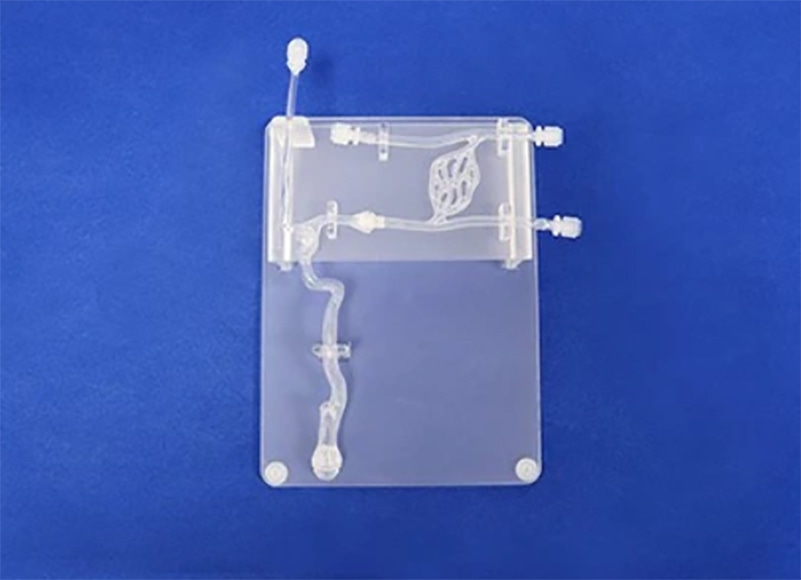
#Industry News
Intracranial Arteriovenous Fistula
Intracranial Arteriovenous Fistula Model
Introduction
Intracranial arteriovenous fistula (AVF) is a rare vascular anomaly characterized by an abnormal connection between arteries and veins within the brain. This condition can lead to significant neurological and vascular complications. This article aims to provide an overview of intracranial arteriovenous fistula, including its diagnosis, treatment options, and the latest advancements in the medical industry.
Understanding Intracranial Arteriovenous Fistula
Intracranial arteriovenous fistulas occur when there is a direct connection between the arterial and venous systems within the brain, bypassing the normal capillary network. This abnormal communication disrupts the normal blood flow pattern and increases the risk of neurological complications. Intracranial AVFs can be classified based on the location, hemodynamics, and underlying cause.
Diagnosis
Clinical Presentation
The presentation of intracranial AVF can vary widely depending on the location, size, and rate of blood flow through the fistula. Common signs and symptoms include headaches, pulsatile tinnitus, neurological deficits, seizures, and vision disturbances.
Imaging Studies
Diagnostic imaging plays a crucial role in identifying and characterizing intracranial AVFs. Techniques such as magnetic resonance imaging (MRI), magnetic resonance angiography (MRA), computed tomography angiography (CTA), and digital subtraction angiography (DSA) help visualize the abnormal blood vessels, determine the precise location and extent of the fistula, and evaluate associated complications.
Treatment Approaches
Treatment options for intracranial AVFs depend on several factors, including the location, size, symptoms, and the risk of complications. The main treatment modalities include:
Endovascular Embolization
Endovascular embolization is a minimally invasive procedure performed by an interventional neuroradiologist. It involves the insertion of a catheter through a blood vessel, guided to the site of the AVF. Embolic agents are then delivered to block the abnormal vessels, promoting closure of the fistula and restoring normal blood flow. This technique aims to reduce or eliminate the risk of bleeding and alleviate associated symptoms.
Surgical Intervention
In some cases, surgical intervention may be necessary, especially for complex or inaccessible AVFs. Neurosurgeons employ various techniques, such as microsurgical resection, to directly access the abnormal vessels and disconnect the arteriovenous connection. Surgical treatment is generally considered when endovascular embolization is not feasible, or when there is a high risk of recurrence.
Radiosurgery
Radiosurgery, such as Gamma Knife or CyberKnife, is a non-invasive technique that uses precisely targeted radiation beams to treat intracranial AVFs. This approach aims to induce vascular fibrosis and gradual closure of the abnormal vessels over time. Radiosurgery is typically reserved for small, well-defined AVFs that are not amenable to embolization or surgery.
Advances in the Medical Industry
The medical industry continues to explore and develop innovative approaches for the diagnosis and treatment of intracranial AVFs. Some notable advancements include:
Flow Diversion Devices
Flow diversion devices, such as flow diverters and flow-modifying stents, are designed to redirect blood flow away from the abnormal vessels, promoting the spontaneous closure of the AVF. These devices serve as scaffolds to restore normal blood flow patterns while promoting endothelialization and vessel remodeling.
Biomaterials and Embolic Agents
Researchers are studying and developing new biomaterials and embolic agents that offer improved occlusion capabilities and reduced risk of complications. These advancements aim to enhance the efficacy and safety of endovascular embolization procedures.
Targeted Drug Therapies
Medical researchers are exploring targeted drug therapies to selectively affect and shrink the abnormal vessels in intracranial AVFs. These therapies may potentially serve as adjuncts to endovascular embolization or as standalone treatments.
Conclusion
Intracranial arteriovenous fistula is a complex vascular anomaly that requires a multidisciplinary approach for diagnosis and treatment. With advancements in imaging technology, endovascular techniques, surgical interventions, and ongoing research in the medical industry, the prognosis and management of intracranial AVFs continue to improve. Collaborative efforts among neurovascular specialists and researchers promise a brighter future for patients with this challenging condition.





